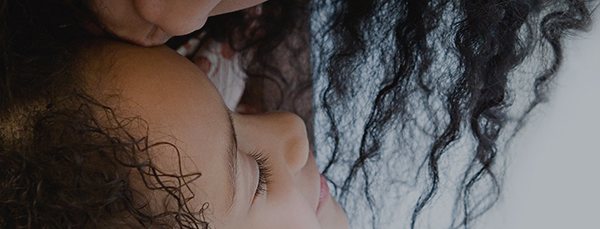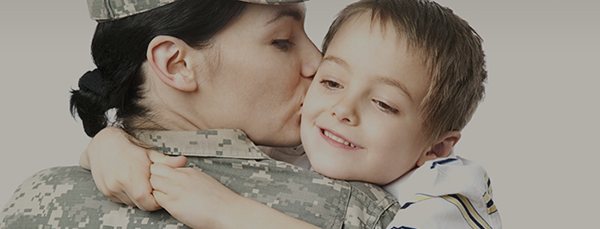Info For - ReEntry Programs
Info For
ReEntry Programs
2.7 Million Children Under the Age of 18 Have a Parent in Prison or Jail
Parental incarceration is associated with greater risk that a child will experience material hardship and family instability - Bendheim-Thoman Center for Research on Child Wellbeing, Princeton University
When the general public thinks about incarceration, what usually comes to mind are overcrowded facilities and high walls with barbed wire. People also picture an all-male population, with most inmates covered in tattoos. The picture that fewer see, is that of parents who are incarcerated.
When a parent goes to prison it takes a devastating toll on the family; especially the children. This might be the first time they are away from their children. Many changes are going to occur as everyone involved adjusts to an incarcerated parent. Serving time does NOT mean that they have lost their right to make decisions about the care of their children, or that their relationship with their children has become any less important.
OnlineParentingProgram.com is a skills based program for incarcarated parents. These classes help parents make the best decisions for the sake of their children and family, and increase their chances of staying in contact with their children while they are in prison. Classes are designed to set realistic expectations of what the incarcerated parent and their family are dealing with, as well as support upon release to society.
Incarcerated ReEntry Opportunities
OnlineParentingPrograms.com in partnership with Creative Response to Conflict has designed online classes to educate the incarcerated population and provide the foundational skills necessary for integration into society upon release. Review Our Classes
The Facts... Incarceration
- More than one in every 100 adults in America are in jail or prison.
- There is a disparate impact on families of color, with African-American children 9x more likely and Hispanic children 3x more likely than white children to have a parent in prison.
- Between 1995 and 2005, the number of incarcerated women in the U.S. increased by 57% and 75% of incarcerated women are mothers.
- 63% of federal prisoners and 55% of state prisoners are parents of children under age 18.
- 46% of all imprisoned parents lived with at least one of their minor children, prior to entry.
- The average age of children with an incarcerated parent is 8 and 22% of the children are under 5.
- Effect on children and families left behind?
- Parental incarceration often results in: financial instability and material hardship, instability in family relationships and structure, and residential mobility, school behaviour and performance problems and shame, social and institutional stigma.
- Evidence supports that maintaining contact with one’s incarcerated parent improves a child’s emotional response to the incarceration and supports parent-child attachment.
- Many programs and services for children whose parents are incarcerated offer promise in meeting some aspect of children’s needs.
- Effect children/youth regarding foster care?
- 10% of incarcerated mothers have a child in a foster home, 85% of these children were placed in foster care prior to the mother’s first period of incarceration. The average stay in first foster care for a child with an incarcerated mother is 3.9 years. These children are less likely to reunify with their parents, get adopted, enter into subsidized guardianship, go into independent living or leave through some other means.
- Reunification is 21% for children of incarcerated parents versus 40% for all other children.
For Your Information
- Correctional education is a fundamental component of rehabilitative programming offered in juvenile justice confinement facilities, most American prisons, and many jails and detention centers.
- Correctional populations are over-represented with individuals having below average levels of educational attainment education "behind bars" presents an opportunity for the incarcerated to prepare for success upon release. A wide variety of administering entities operate correctional institutions in the United States, and a wide variety of organizations are the providers of onsite prison education programs.
- Various federal education programs have supported education in State and local prisons; and in 1991, an Office of Correctional Education (OCE) was created by the Carl D. Perkins Vocational and Applied Technology Education Act, to coordinate and improve these efforts to support educational opportunities in correctional settings.
- The OCE function currently resides in the Office of Vocational and Adult Education (OVAE), Division of Adult Education and Literacy (DAEL). While OCE has a unique coordinating role for correctional education, other administrative units within the Department of Education, support and oversee specific programs that are based in correctional facilities.
ReEntry Resources
- Correctional Education Association (CEA)
- LINCS, the Literacy Information and Communication System
- Correctional Education Data Network
- Community Partnerships for Adult Learning
- The National Evaluation and Technical Assistance Center (NDTAC)for the Education of Children who are Neglected, Delinquent or at Risk
- The National Center on Education, Disability, and Juvenile Justice (EDJJ)
Research on correctional education ensures that current practices are effective and new discoveries and technologies are implemented in correctional education.
- Evaluating the Effectiveness of Correctional Education, A Meta-Analysis of Programs that Provide Education to Incarcerated Adults, The Rand Corporation, 2013
- A Reentry Education Model Supporting Education and Career Advancement for Low-Skill Individuals in Corrections PDF (667KB)
- Community-based Correctional Education PDF (956KB)
- Prison and Community College Partnerships PDF (925KB)
- Take Charge of Your Future, Get the Education and Training You Need PDF (4.8MB)
- Locked Up and Locked Out: An Educational Perspective on the U.S. Prison Population PDF (638KB)
- Learning to Reduce Recidivism: A 50-State Analysis of Postsecondary Correctional Education Policy PDF (499KB)
- Literacy Behind Bars PDF (3.1MB)
- Utilizing Post-Release Outcome Information PDF (202KB)
- Reentry Roundtable on Education, Urban Institute PDF
- Three State Recidivism Study PDF (554KB)
Copyright © 2008 Annie E. Casey Foundation. All rights reserved.
Protect Yourself and Your Children From Domestic Violence.
CALL 911 for immediate assistance,
or your local emergency service.







